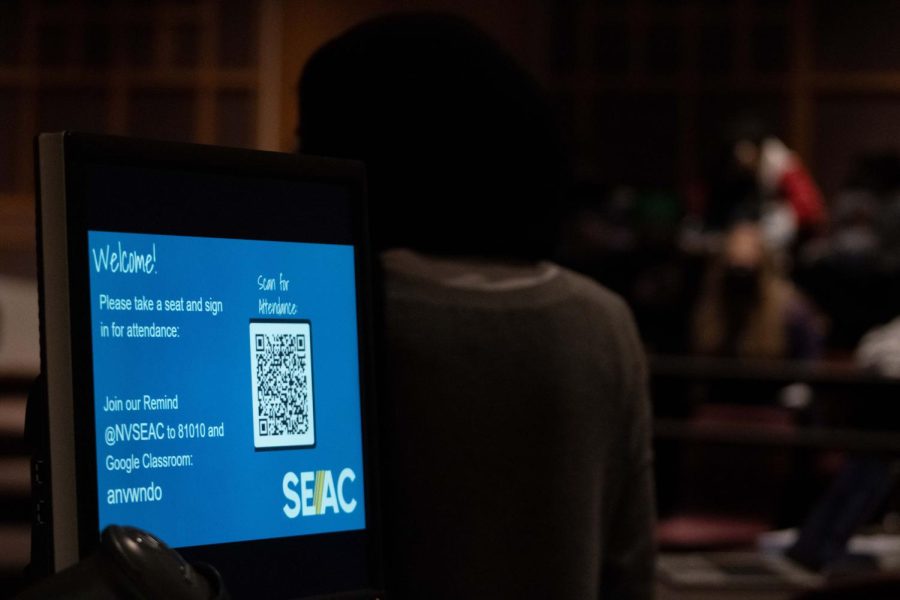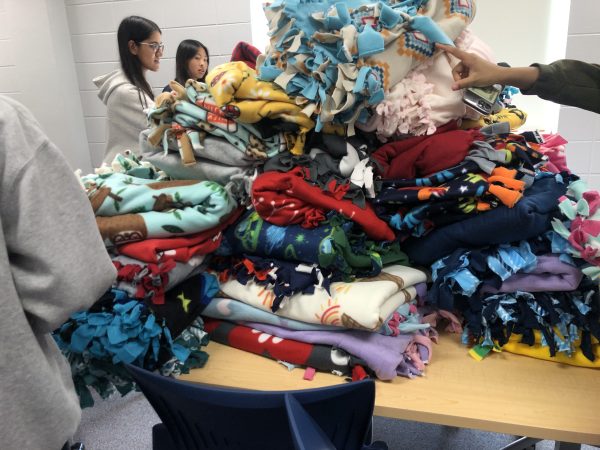Student Equity Action Committee: a forum of discussion that provides both hope and disappointment for Neuqua’s future
A slideshow shares an attendance link for students attending Student Equity Action Committee.
This past Wednesday, Jan. 26, 2022, members of the Student Equity Action Committee (SEAC) convened during fifth and sixth periods to promote a discussion about identity and representation within the school. Teachers were looking to hear student perspectives regarding who is represented, how they are represented and how representation should be changed and improved. A notable member of the audience included Principal Dr. Lance Fuhrer who was actively listening as students addressed their concerns regarding feeling unsafe and unseen in school.
SEAC has been defined by Christina Jakubas and Maryam Sultan, the teachers that started the committee, as “an organization that will allow students to share their views on issues of equity, diversity and inclusion, and to then collaborate with staff for necessary change.” It was advertised to students who were interested in “equity and social justice,” and identities that the committee were looking to represent include race, gender, sexuality, religion, ability and economic status. Applications to join the committee were sent out in early November 2021.
Come the end of January, the Student Equity Action Committee held their second official meeting which was focused on identity. Students were asked to consider on the following questions:
- Who is represented in the building? Who is not represented?
- How are specific communities being represented (if at all)? Are these portrayals positive or negative?
- What must change in order to have a more accurate and inclusive representation of all people?
In order to develop students’ understanding of these questions, they were asked to code a Social Identity Wheel, created by the University of Michigan.
“The Social Identity Wheel worksheet is an activity that encourages students to identify social identities and reflect on the various ways those identities become visible or more keenly felt at different times, and how those identities impact the ways others perceive or treat them,” says the College of Literate, Science, and The Arts. “The worksheet prompts students to fill in various social identities (such as race, gender, sex, ability disability, sexual orientation, etc.) and further categorize those identities based on which matter most in their self-perception and which matter most in others’ perception of them. The Social Identity Wheel can be used… to encourage students to reflect on the relationships and dissonances between their personal and social identities.”
Students then branched out into small groups with teachers, where they continued to discuss identity and representation within the school. These conversations were largely based on teachers wanting to hear how students felt represented in both the classroom and curriculum, which to many students, felt like an obvious answer. For example, a common response shared by students was that they didn’t feel represented by the English curriculum because many of the authors whose works were shared in the required classes were white with the exception of Sandra Cisneros, a Mexican author.
Other students also pointed out the lack of diversity in the teaching staff. “[We need] safe representation of people of color as teachers and for certain classes,” shared Ayana Seegars.
“The African American literature class is not being taught by an African American teacher because we don’t have an African American teacher to teach it. Just seeing more women in STEM fields. It shouldn’t be that one token teacher that everybody remembers.”
With this lack of diversity has also come certain issues within the classroom where students have felt mistreated and/or hurt. Many students shared that when they attempted to address these concerns with teachers and guidance, they felt like they weren’t being heard.
“There’s been [sic.] multiple incidents where me and other students have brought up something to the school, and they’ve chosen not to [take action]. I said something before about something that happened in a classroom, and I brought it up because it was obvious that they were only going to give this kid the benefit of the doubt… and it sounds like I’m not getting heard. It’s like they were hearing me… but they weren’t going to do anything or take those extra steps to take action for it,” explains Lianna Payton.
“You would think that in certain things that happen, especially with a minority, that there would be care… but honestly, it seems like the exact opposite of it. And that really doesn’t help when I think of myself being represented.”
“Certain things I just choose to not say anymore because I feel like the school’s not going to do anything about it.”
Payton’s silence, caused by the school’s lack of school action, is exactly the act that many teachers are looking to break in the forthcoming years. SEAC was introduced as a forum through which students could express concerns like these and teachers would actually work closely with administrators to advocate for change within the school. However, with a historic lack of change in curriculum and practice, it’s been easy for students to find that speaking up at SEAC is eerily similar to their past experiences.
“Honestly, I’ve been in organizations like this since sixth grade, and I feel like they’re very discussion based. We talk about it, we relate on different levels and then nothing’s put into place, and then they say come back to the next meeting,” admits Seegars. ”I feel like they take it to the board, they take the steps for it, but certain people in power just ignore it, so it’s still really weird because I still talk about it but I’ve never seen change.”
For now, whether or not change will be made is in the hands of administrators, and oftentimes, change needs to start at the district level; the only action students can truly take is to hope that their voices will be heard.
Student Equity Action Committee (SEAC) is led by Christina Jakubas and Maryam Sultan. For any questions or concerns, reach out to them at [email protected] and [email protected].
Your donation will support the student journalists of Neuqua Valley High School. Your contribution will allow us to print our next newspaper edition as well as help us purchase equipment and cover our annual website hosting costs.





